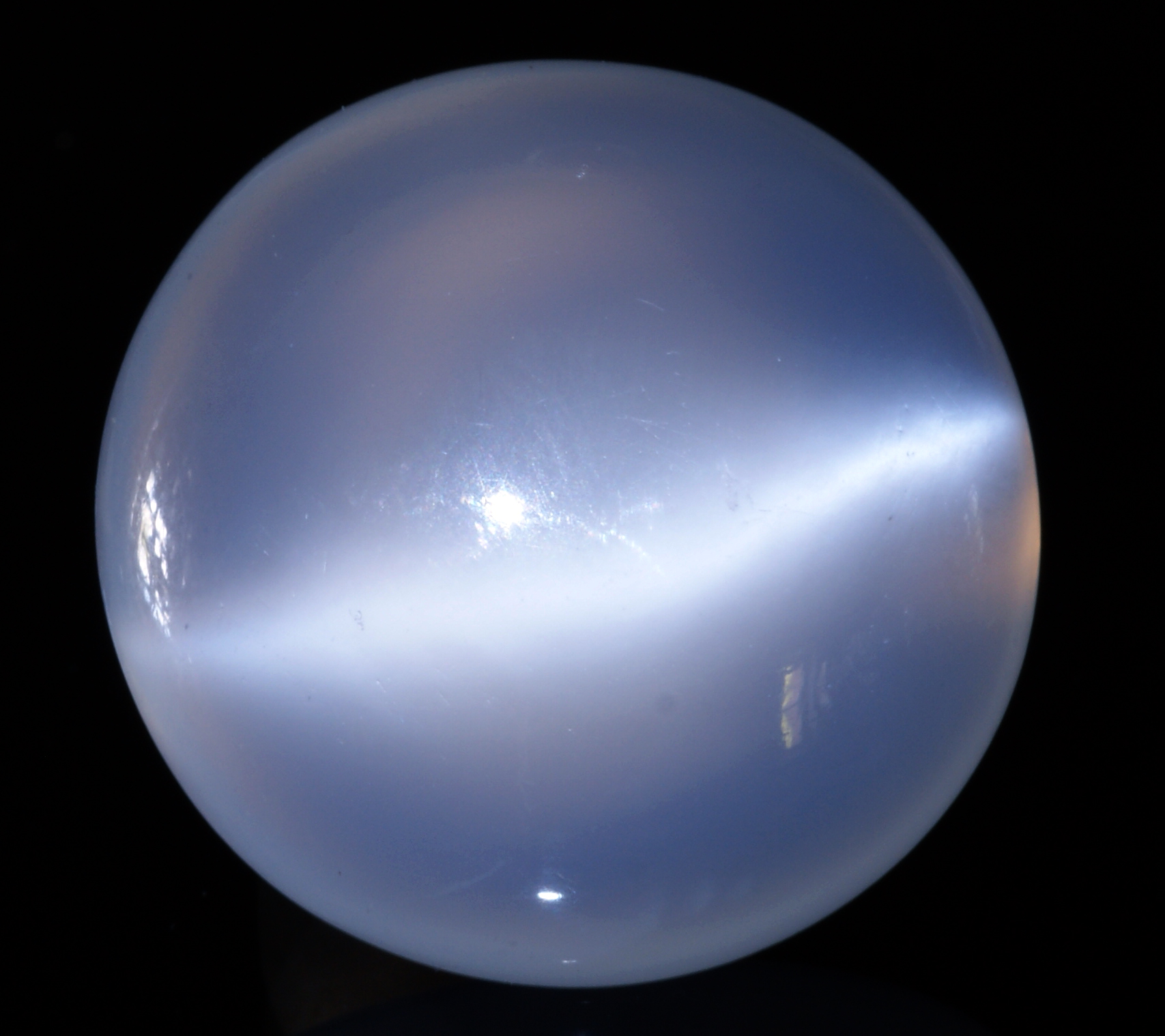adularescence on:
[Wikipedia]
[Google]
[Amazon]
 Adularescence ( ) is an
Adularescence ( ) is an
The origins of color in minerals
" ''American Mineralologist'', vol. 63, pp. 219-229.
 Adularescence ( ) is an
Adularescence ( ) is an optical phenomenon
Optical phenomena are any observable events that result from the interaction of light and matter.
All optical phenomena coincide with quantum phenomena. Common optical phenomena are often due to the interaction of light from the sun or moon wit ...
that is produced in gemstones like moonstone. The optical effect is similar to labradorescence and aventurescence
In gemology, aventurescence (sometimes called aventurization) is an optical reflectance effect seen in certain gems. The effect amounts to a metallic glitter, arising from minute, preferentially oriented mineral platelets within the material. Thes ...
.
Description
The effect of adularescence, also commonly referred to as '' schiller'' or ''shiller'', is best described as a milky, bluish luster or glow originating from below the surface of the gemstone. The schiller, appearing to move as the stone is turned (or as the light source is moved), gives the impression of lunar light floating on water (accounting for moonstone's name). Though white schiller is the most common, in rarer specimens, orange or blue lusters are produced. This effect is most typically produced byadularia
Orthoclase, or orthoclase feldspar (endmember formula K Al Si3 O8), is an important tectosilicate mineral which forms igneous rock. The name is from the Ancient Greek for "straight fracture," because its two cleavage planes are at right angles ...
, a K-feldspar or orthoclase
Orthoclase, or orthoclase feldspar ( endmember formula K Al Si3 O8), is an important tectosilicate mineral which forms igneous rock. The name is from the Ancient Greek for "straight fracture," because its two cleavage planes are at right angles ...
(), from which the name derives.Shipley, Robert M. (2007), ''Dictionary of Gems and Gemology'', Read Books, p. 93. Adularescence appears in numerous other gemstones, notably common opal
Opal is a hydrated amorphous form of silica (SiO2·''n''H2O); its water content may range from 3 to 21% by weight, but is usually between 6 and 10%. Due to its amorphous property, it is classified as a mineraloid, unlike crystalline form ...
, rose quartz
Quartz is a hard, crystalline mineral composed of silica (silicon dioxide). The atoms are linked in a continuous framework of SiO4 silicon-oxygen tetrahedra, with each oxygen being shared between two tetrahedra, giving an overall chemical form ...
and agate
Agate () is a common rock formation, consisting of chalcedony and quartz as its primary components, with a wide variety of colors. Agates are primarily formed within volcanic and metamorphic rocks. The ornamental use of agate was common in Anci ...
. However, due to inclusions in these other stones, the effect is displayed differently. The schiller is scattered by inclusions and appears hazy; non-hazy specimens are specially referred to as "milky". Thus, adularescence occurring in non-adularia gemstones is termed differently – the "girasol effect" and opalescence (for opals only) are two such terms. When the schiller forms an indistinct band, it is said to display a chatoyant effect. Only clearly defined bands are referred to as "cat's eyes".
As an optical phenomenon, adularescence exists only in the presence of light; it is a product of the interaction between light and the internal microstructures of the mineral and not a property of the mineral itself. The effect is produced by alternating layers of two types at a scale near the wavelength of light (approximately 0.5 micron
The micrometre ( international spelling as used by the International Bureau of Weights and Measures; SI symbol: μm) or micrometer (American spelling), also commonly known as a micron, is a unit of length in the International System of Un ...
) – this leads to light scattering and interference.Nassau, Kurt (1978).The origins of color in minerals
" ''American Mineralologist'', vol. 63, pp. 219-229.
See also
*Aventurescence
In gemology, aventurescence (sometimes called aventurization) is an optical reflectance effect seen in certain gems. The effect amounts to a metallic glitter, arising from minute, preferentially oriented mineral platelets within the material. Thes ...
* Labradorescence
* Optical phenomenon
Optical phenomena are any observable events that result from the interaction of light and matter.
All optical phenomena coincide with quantum phenomena. Common optical phenomena are often due to the interaction of light from the sun or moon wit ...
* Rainbow lattice sunstone
References
{{reflist, 1 Mineralogy Optical phenomena